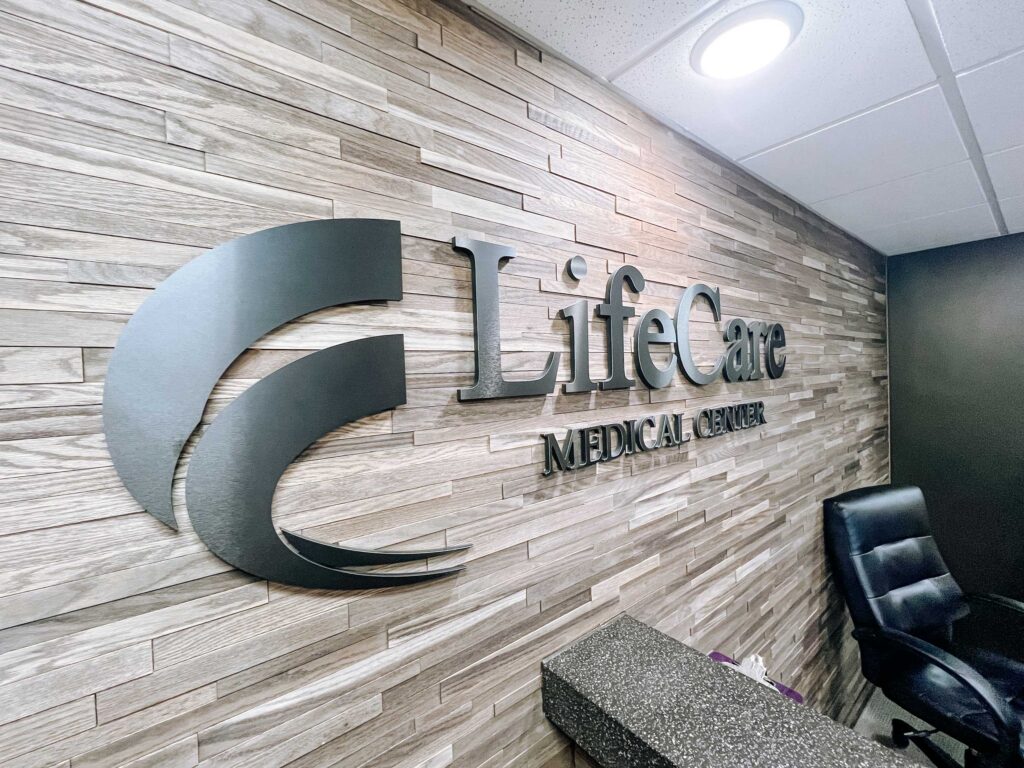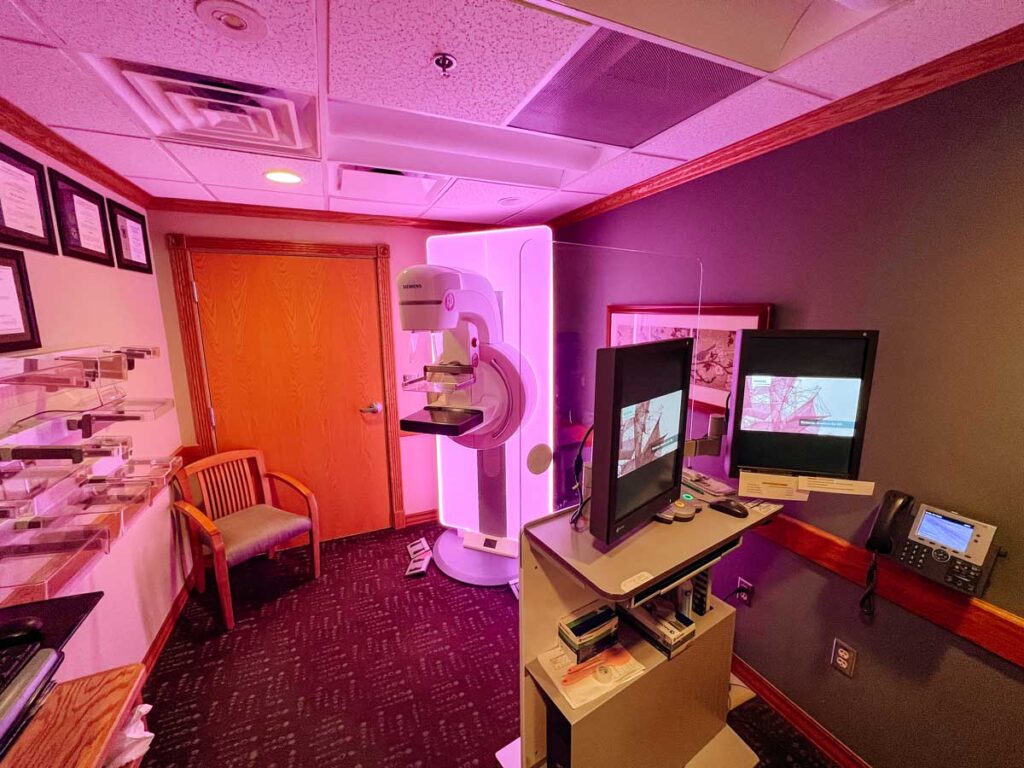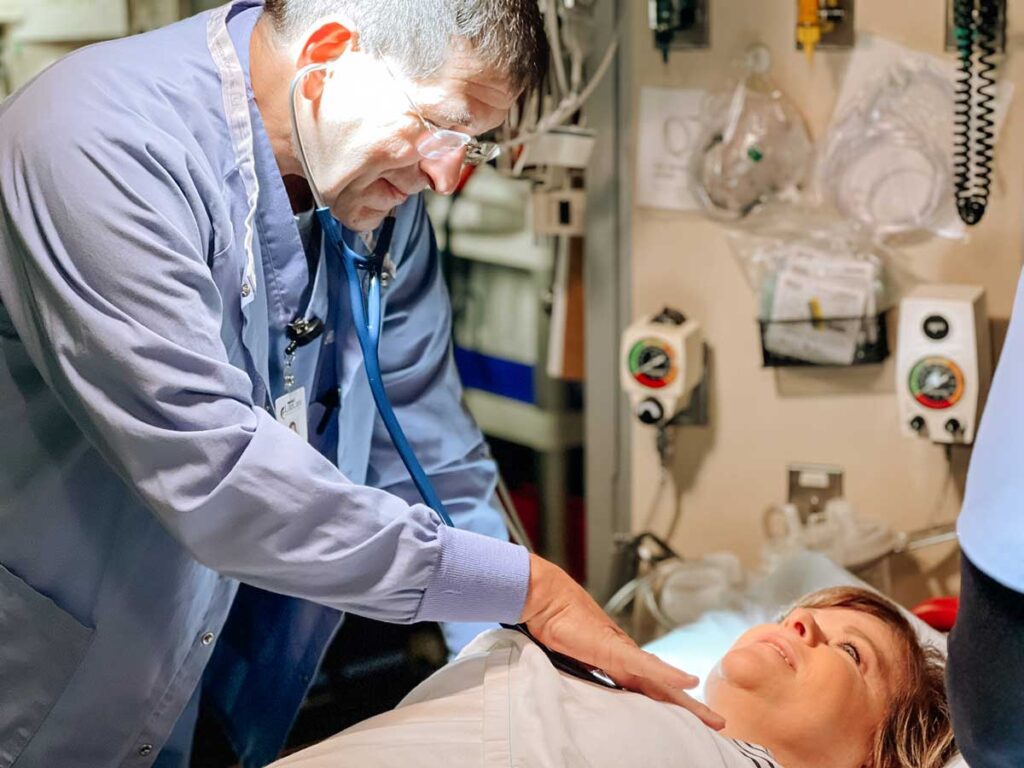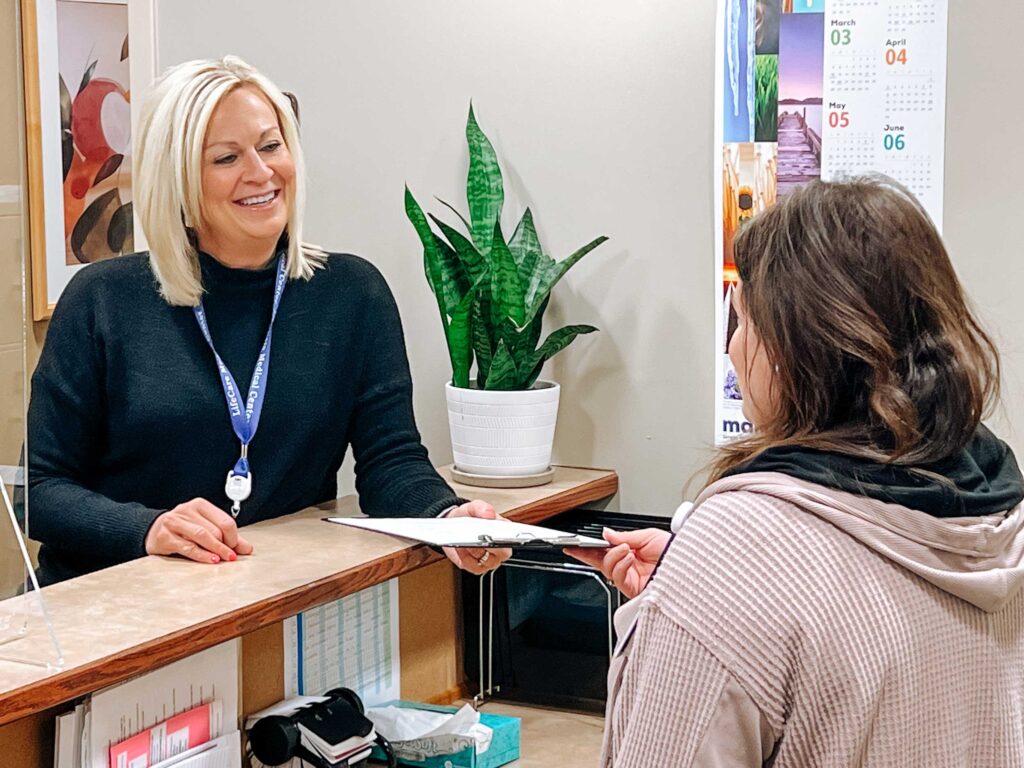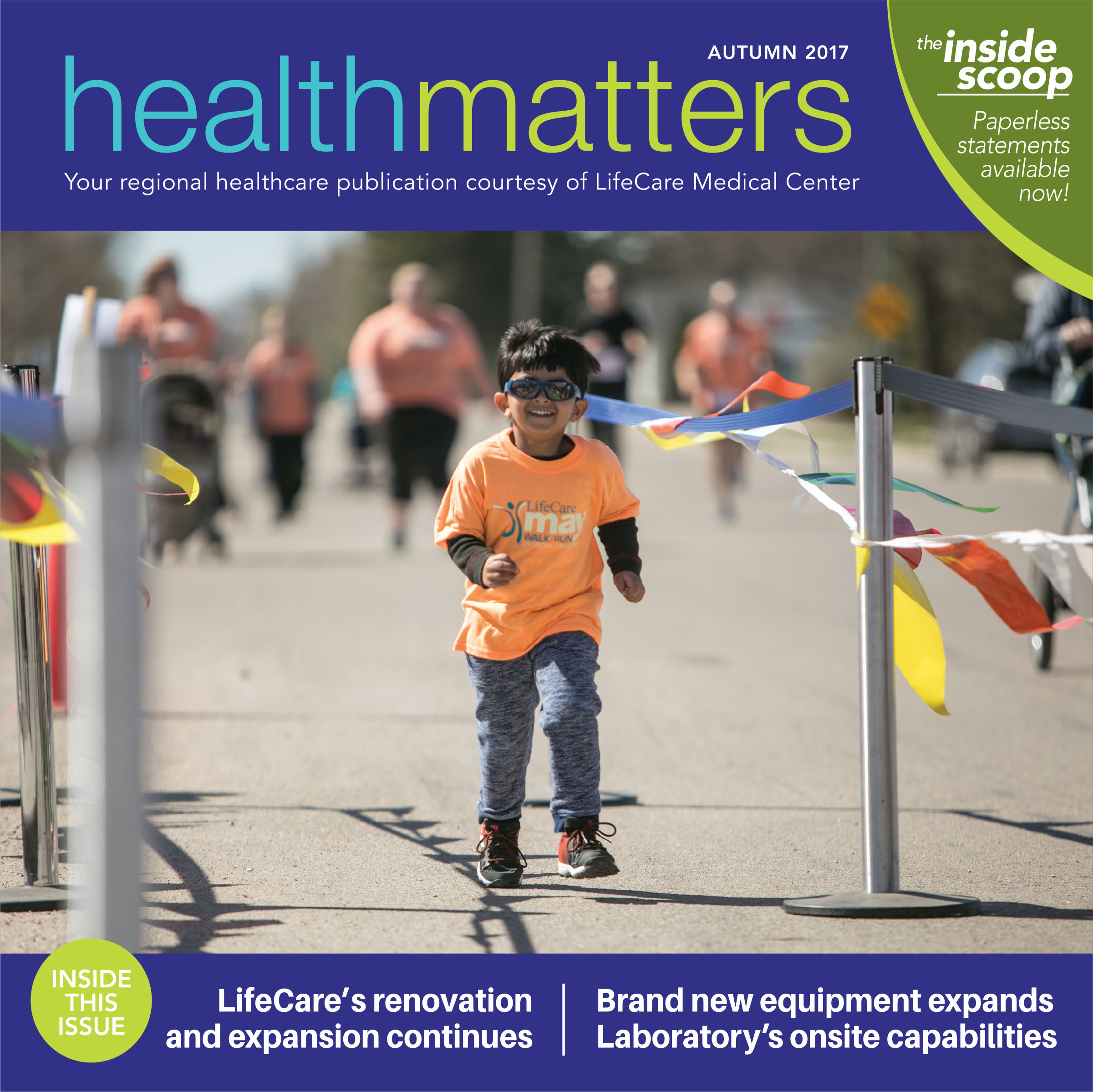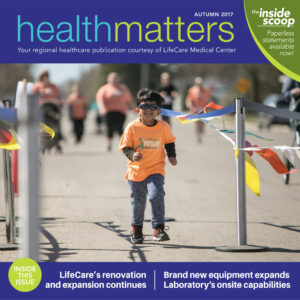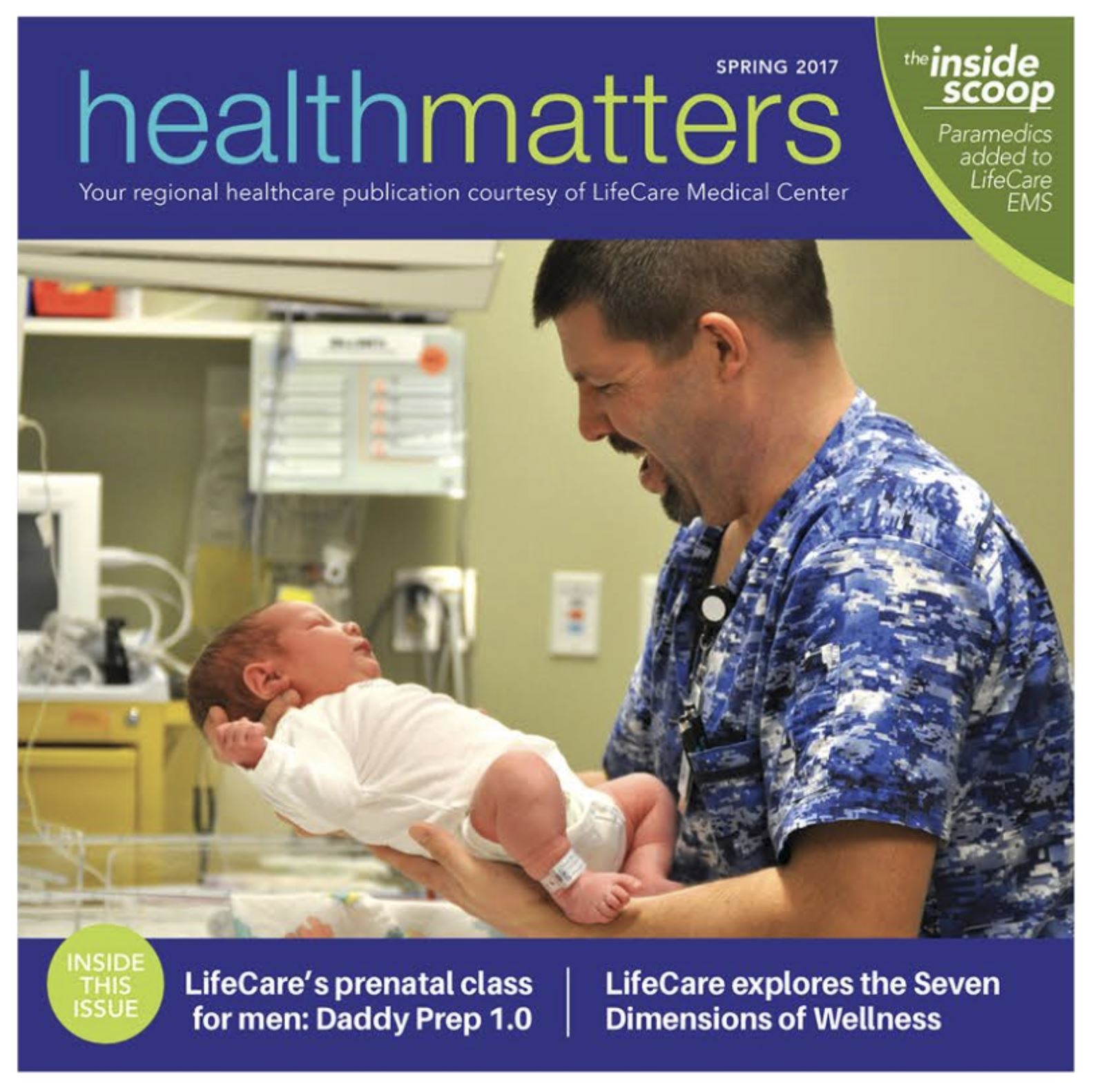Health Matters Autumn 2017
LIFECARE’S PRENATAL CLASS FOR MEN
Health Matters Spring 2016
A new era for LifeCare’s MRI
When LifeCare s board of directors voted to invest in a permanent, in-house MRI machine, they weren’t just agreeing on the lease to a million dollar piece of equipment. They promised a $4 million expansion to house it.
That was over two years ago, and now with nearly every detail in place, the more than 11,000 sq. ft. addition to the hospital s north side is home to LifeCare s brand new MRI machine, a Siemens Magnetom Aera 1.5 Tesla.
This is a momentous occasion for LifeCare Medical Center. This MRI equipment puts LifeCare s Imaging Department into a whole new generation of technology, says Keith Okeson, LifeCare President/CEO.
The state-of-the-art Magnetic Resonance Imaging device allows LifeCare personnel to capture pristine images of the human body.
MAKING ROOM
The construction effort that cleared the way for LifeCare s new MRI also provided additional space for the Telemedicine and Infusion Therapy departments. This, however, was not a typical run of the mill construction project.
This was a very unique endeavor, says Brian Grafstrom, LifeCare s Director of Facility Management. To guarantee clean, crisp MRI images, we needed to stop all outside radio waves from entering the room.
To do this, crews used a protective copper sheeting to essentially wrap the entire room in metal.
We had to consider all forms of motion within the building. That includes the elevator located on the other side of the building, says Shar Peterson, LifeCare s Director of Imaging. Otherwise the slightest motion could cause artifacts to appear on the images.
LifeCare produced its first in-house MRI using the new equipment in August and now offers the service five days a week.
This is a big step from the occasional service we had through the mobile unit, she says, referring to the portable MRI machine from Diagnostic Medical Systems.
That arrangement began in 1992, which in its day was an achievement unto itself because it offered patients local access to MRI technology.
Over the years, a growing demand increased the traveling MRI s visits from one to two days a week.
LifeCare remains grateful to DMS and its staff for their years of outstanding service to the community.
They will be missed, however we are happy to now have MRI scans available to our patients five days a week, says Peterson. This is a huge investment for the hospital, but the benefit of having a state-of-the-art piece of equipment, like the new MRI, available to our community members nearly every day, is so worth it.
HOW IT WORKS
Once only a dream, the MRI is now an essential tool in modern medicine, Peterson says.
Because of how precise the images are, this technology allows doctors to look at tissues inside the body without making a single cut.
The average MRI scan takes 30 minutes, while a complete exam lasts up to 60 minutes, during which time several dozen images may be obtained.
These images assist physicians in making the best diagnosis possible and may even eliminate the need for biopsy or surgery, says Peterson.
The advanced technology of the Siemens MRI uses a computer, a large magnet, and radio waves to produce a two or three-dimensional image of the body, Peterson explains.
If all safety precautions are in place, the magnetic field used is not harmful, she says. For that reason, all patients first must be screened for implants and other types of metal fragments that may be in their bodies.
WHAT IT SEES
A person may need an MRI for a variety of reasons.
Stroke, shoulder pain, and spinal injuries are just a few. An MRI can also be used to detect many kinds of conditions, especially involving soft tissue and joints.
Because an MRI scans at the cellular level, it is possible to differentiate between healthy and diseased cells.
This is especially important in cancer cases and cases involving stroke where it is possible to illustrate cell interaction with the brain, she says.
MRI technology also has proven to be of great clinical value in the assessment of central nervous system disorders, musculoskeletal diseases, hepatic lesions, heart and great vessel disorders, pelvic masses, and masses in the adrenals and kidneys, Peterson says.
It is also the modality of choice for brain and spinal cord imaging.
COMFORT IS KEY
To produce crisp images, a patient must be perfectly still. To be still, a patient must be comfortable. To make a patient comfortable can be a challenge, especially for those who become uneasy in confined spaces.
With that in mind, LifeCare selected an MRI device with a larger than average opening at its center.
This MRI unit has a 70 cm bore, which is about a 30 inch circular opening, says Peterson. This helps claustrophobic patients feel more at ease during the scanning process.
A stereo sound system is also integrated into the machine, which allows patients to listen to their favorite music during the exam.
Other comfort features include adjustable settings for ventilation, lighting, and airflow.
Additionally, the table can be lowered to less than 17 inches from the floor and allow for greater access by the young and elderly.
Well trained staff
Among those trained to operate the new MRI are two longtime members of LifeCare s Imaging team.
Mary Anderson, RT (RMCT) and Brooke Johnson, RT (RMCT) spent two years preparing for the new MRI s arrival.
These women spent a week in North Carolina at the manufacturer s training center in addition to attending several sessions with an onsite application specialist from the company.
In addition, LifeCare s locally contracted radiologist Daniel Courneya, M.D., has researched and conducted MRI scans for more than 25 years.
He will be instrumental in providing guidance to our Imaging staff and physicians, Peterson says.
SAFETY TRAINING
Because safety and accident prevention are of utmost importance, twolevels of safety training have been implemented at LifeCare.
All staff members from Imaging, Housekeeping, Facilities Management, and Information Systems as well as staff from the Roseau Fire Department have received Level I training in MRI.
Level II Safety Training is reserved for immediate MRI Staff only. In addition, law enforcement officials have been given an onsite tour to ensure they know their boundaries within the MRI suite.
This magnet has a tremendous amount of force much like a junk yard magnet that is strong enough to pick up vehicles, says Peterson. It s a powerful piece of equipment and we at LifeCare are excited and extremely proud for the opportunity to introduce it to our community.
To learn more about Imaging Services at LifeCare, call (218) 463-2500.
LifeCare welcomes three new department directors
LifeCare proudly welcomes three new department directors to its leadership team while bidding farewell to three exceptional longtime employees. In February, Brett Rima replaced Curt Ireland, who retired from his role as Director of Roseau EMS a job he held since 1991.
Kristy McFarlane, LifeCare s new Director of Human Resources, joined the organization in July following the retirement of Carol Klotz, who served in that position since 1997. LifeCare s new Director of Hospitality, Gabe Mooney, was hired in May to replace Jill Hulst, who had been with LifeCare since 1998. LifeCare extends its best wishes and a sincere offering of thanks to Curt, Carol, and Jill for their decades of service. Now for a bit more on the three who plan to fill their shoes.
KRISTY MCFARLANE, LifeCare s new Director of Human Resources holds a B.A. in Communication from MSU, Moorhead, and has human resources job experience from Polaris Industries as well as Cargill in the Twin Cities.
LifeCare has a great reputation in the community as an employer of choice and I feel very fortunate to have the opportunity to work for such a great organization, says McFarlane.
Impressed with the hospital’s technology and top notch facilities, she says, it is evident how much every person cares about patients and their well-being and how the LifeCare team is like an extended family.
Now a few months into her new role, McFarlane continues to spend free time with her family, and enjoys trips to the lake, kids sporting events, Pinterest projects, reading, bargain shopping, and meeting her new coworkers.
I look forward to meeting everyone and being on this team of wonderful people who work to ensure excellence in everything we do.
GABRIEL MOONEY, LifeCare s new Director of Hospitality, earned a Master of Science degree in Administration with a specialization in Healthcare from the University of South Dakota. He also holds a B.S. in Dietetics from NDSU and is a registered and licensed dietitian.He comes to LifeCare from CHI LakeWood Health in Baudette and is excited to make a difference in Roseau County and LifeCare s service area.
My job as Director of Hospitality allows me to have an impact on everyone who comes in contact with LifeCare, he says. No matter why they are here, my role has an impact from the chairs they sit on in the waiting room to the nutrition of the food.
Mooney says he sees many similarities between LifeCare s culture and his own.
I feel LifeCare can offer a lot to me and my family, and I see myself as being able to assist LifeCare in its mission.
He also recognizes the opportunities that come from LifeCare being a self-determined organization.
Being independent, LifeCare is open to suggestions from all its employees. It allows for new, innovative ideas to become reality and enables us to pursue constant improvement for those in our care, he says. Knowing you can make a difference provides job satisfaction. I am proud to be part of the community and proud to be part of LifeCare.
Mooney enjoys spending time outdoors, traveling with his wife Katelyn, and being with family. An avid wrestling fan, he also serves as a high school and college wrestling official at matches throughout the state.
BRETT RIMA, LifeCare s new Director of Roseau EMS, is a Paramedic with an A.A.S. degree in Supervising Management. He has worked for Thief River Falls Area Ambulance, the Minnesota EMS Regulatory Board, and Minnesota Homeland Security & Emergency Management.As a state-certified Emergency Manager, I appreciate being involved in the emergency preparedness aspect of hospital operations. It s a great opportunity to be a part of the LifeCare Emergency Preparedness Committee working collaboratively to enhance event planning and response in the event of a major incident, he says.
Now settled into his job, Rima is pleased to be working with staff to upgrade the level of care currently provided by Roseau EMS.
I appreciate the support from administration to allow me to explore and implement potential changes for providing pre-hospital care and the confidence they convey for me to perform my job.
Rima says he was intrigued by the willingness of other department directors to assist while he became acclimated to his position.
There is a team atmosphere at LifeCare when staff members work together to provide excellent medical care and improve the patients experience, he says.
Rima says developing a public relations program to be implemented in the community is important for conveying a message of life safety for the citizens served by Roseau EMS and our Greenbush station. Such programs, he says, may include Kids on Wheels, Community Meet-n-Greet, high school sports activities, EMT and CPR education.
In addition to family time with his wife Gail and their three children, Rima enjoys travel, movies, music, walking, exercise, and biking.
Multiple construction projects on deck for LifeCare’s main campus
Improvements to LifeCare s main campus continue into the foreseeable future, with four new projects already on the docket.
The first noticeable change will be an expansion of the Imaging departments waiting area.
According to Shannon Carlson, Vice President of Support Services, that space will be converted into a combined waiting room and registration desk for Laboratory and Imaging services.
Patients going to these two departments can expect a slightly different navigation process in the months to come, but all areas will be clearly marked to make things as convenient as possible, says Carlson.
In 2016, the east wing of the building s clinic will undergo a complete remodel to open up a tight space occupied by Altru Health System.
The narrow hallways will be replaced with wider and brighter corridors which will allow for better patient flow, Carlson says, and the transformation will include new exam and procedure rooms, more physician exam rooms, and improvements to the overall aesthetics.
Also in the spring, a water main dating back to 1962 will be replaced on the north side of the complex. According to Carlson, this inconvenient but necessary project includes total removal of the blacktop road and sidewalks on the northeast side of the LifeCare campus.
Patients and visitors of LifeCare Rehab and Roseau Manor may be directed to use alternate routes and entrances during this time, Carlson says, but we will finalize those routes once construction begins.
Also ahead is a complete facelift of the nearly 28,000 sq. ft. LifeCare Roseau Manor.
This project will occur in phases, taking one wing at a time. This will minimize resident moves and help make changes as streamlined as possible, says Carlson.
Changes will include more private resident rooms and smaller, more intimate dining areas in each wing.
For more information, contact Shannon Carlson at (218) 463-4701.

